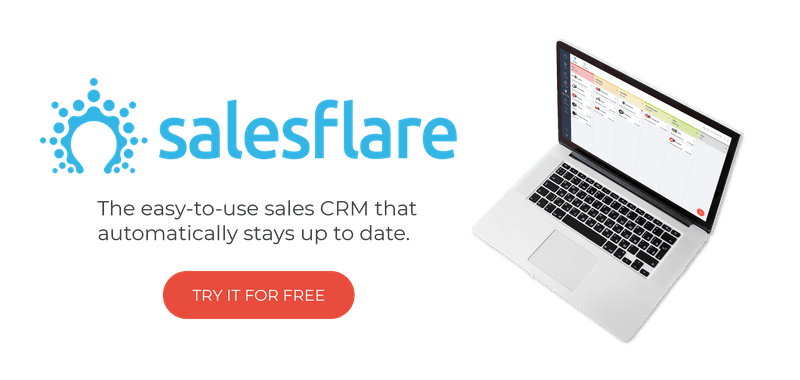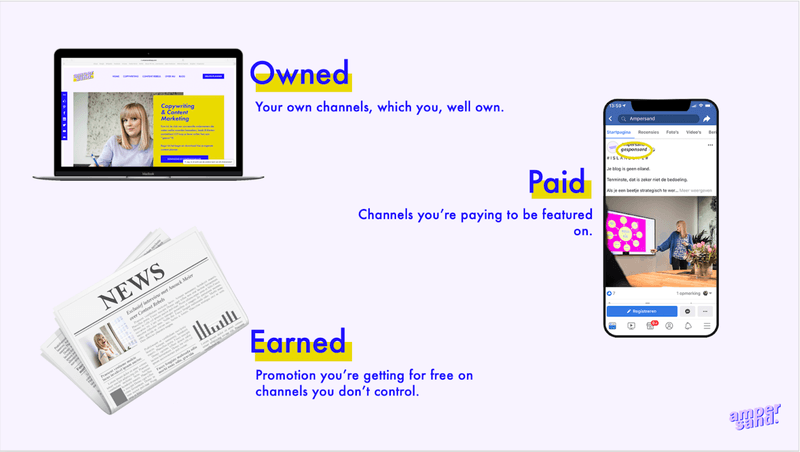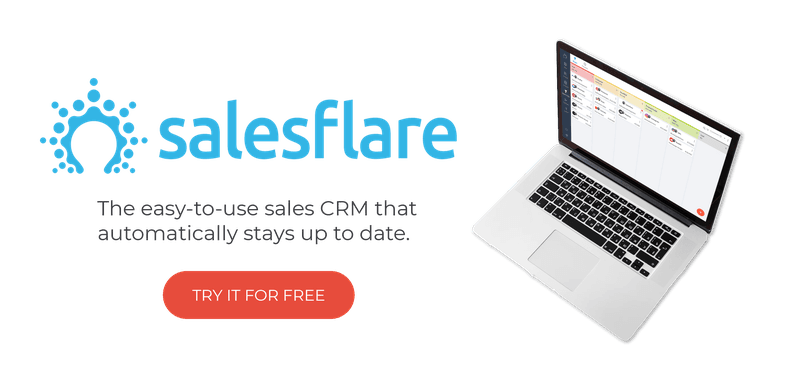Die zehn Gebote der effektiven Inhaltsverteilung
Content Marketing Meisterklasse: Teil Sieben
Im vorangegangenen Teil dieser Content Marketing Masterclass haben wir Ihnen einige bewährte und erprobte Copywriting-Techniken von den Meistern des Werbetextens der alten Schule.
In Part Seven – which is all about content distribution – I want you to take a cue from yet another classic authority on spreading valuable content: Jesus Christ himself.
Because if you have a message that is worth spreading, you need to share the love, people. Not once, not twice, but over and over again. You’ve got to preach that stuff to whomever wants to hear it. You know, evangelist-style.
All joking aside – there’s a ton of content created every day — and the sad truth is: most of it doesn’t get any attention at all.
But it doesn’t have to be this way. If you’ve taken the time to write a well-researched, quality piece of content, follow these commandments to make sure your message gets to your followers. You’ll have them singing Hallelujah in no time!
This post is Part Seven in a brand spanking new Masterclass Series on Content Marketing. We believe it’s an incredibly important topic – and according to a little survey we did, you do too. Trouble is: there is so much content on content marketing out there (talk about meta) and a lot of the intel is conflicting.
Wir präsentieren Ihnen diese Masterclass in Zusammenarbeit mit Anouck Meier, Chief Storytelling Officer bei Ampersand. Anouck ist ein Conversion-Texter und ein Content-Marketing-Stratege, der mit zahlreichen großen und kleinen Marken zusammengearbeitet hat, um ihnen zu helfen, ihre Geschäftsziele durch strategische Inhalte zu erreichen. Lassen Sie uns in einem umfassenden Leitfaden die Geschichte der Inhalte ein für alle Mal klären. Bereit zum Eintauchen?
- Jeroen Corthout, Mitbegründer von Salesflare, einem einfach zu bedienenden Vertriebs-CRM für kleine B2B-Unternehmen

1. Du sollst die Verbreitung von Inhalten ernst nehmen
Oh, I remember the days when I used to have a carefully curated list of blogs in the favorites folder of my browser. There were only a handful of them – mostly fashion blogs and (cringe, cringe) wedding planning blogs (and yes, I did eventually get married, thank you).
I would check in on them pretty much on a daily basis (or more – if work was slow) to see if there were any new posts. Hey – it’s just what you did in the early 00’s.
Diese Zeiten? Die sind längst vorbei, Leute.
Im Jahr 2015 analysierten Moz und Buzzsumo mehr als eine Million Artikel im Web (Content, Shares, and Links: Insights from Analyzing One Million Articles). Ihre Ergebnisse?
Turns out that 75 percent of blog posts didn’t have a single inbound link and more than half had only two or fewer Facebook interactions. I mean, if that’s the impact you’re going to create with a blog post, you may as well stick to cold calling, talking to random strangers in a bar or Craigslist for finding leads.
“It may sound harsh but it seems most people are wasting their time either producing poor content or failing to amplify it.”
Autsch.
With the interwebs only getting more cluttered over time, most content simply never reaches its intended audience. You’d almost start believing content marketing doesn’t work. Of course, by now you know there is significant evidence to the contrary.
What is also clear is that simply posting your content and waiting for your ideal reader to magically discover it just doesn’t cut it anymore. A lot of content creators think their job is done when they’ve published their content. Or when they’ve posted their links on social media and sit there eagerly waiting for the accolades (and customers) to roll in.
Hate to break it to you, but unless you’re incredibly lucky, that won’t happen without some extra marketing legwork and a focus on content distribution.

2. Du sollst verschiedene Arten von Vertriebskanälen nutzen
Before diving into concrete content distribution strategies, it’s probably a good idea to consider the different types of distribution channels out there. There are pros and cons to each of them and ideally, you’ll end up using a mix of different channels.
Es gibt ungefähr drei Arten von Kanälen, über die Sie Ihre Inhalte verbreiten können:
- Eigene Kanäle: These are the content distribution channels you, well, own: your website, email marketing list and your blog. The good news: when you’re using these channels, you don’t depend on some funky sich ständig ändernde algorithm (hello, Mr. Zuckerberg!). On these channels, you’re Der Chef. On the downside, it can be incredibly challenging to condition your followers to go out of their digital way to visit these outposts regularly. It’s just not 2003 anymore. You should also focus on posting consistently and diversifying your own channels. Try using a Netzwerk zur Bereitstellung von Inhalten (CDN) um Ihre Inhalte auf all Ihren Kanälen gleichzeitig zu veröffentlichen.
- Bezahlte Kanäle: Paid promotion enables you to share messages on platforms you don’t own – but only if you’re prepared to put some (or a lot of) money on the table.
- Verdiente, geteilte oder geliehene Kanäle: Some attention for your content can be “earned” – this is the case if you get spotted by influencers, PR-Agenturen or the press. Shared channels, i.e. social media, have opened up a host of opportunities for content creators to post original content too. However, you should be aware that your activities on these platforms are ultimately controlled by the business decisions of a third party (hello, Mr. Zuckerberg again!). They can change their policies and procedures – or shut down their business – on a whim.
Die Botschaft sollte eindeutig sein: don’t put all your eggs in the basket someone else is holding for you. Vergewissern Sie sich immer, dass Sie Ihre Heimatbasis abgedeckt haben, bevor Sie Ihre Botschaft über bezahlte oder gemeinsame Kanäle verbreiten.

3. Du sollst den Inhalt für die organische Suche optimieren
We’ve discussed the importance of setting up your content for SEO-success before, but it doesn’t hurt stressing it again. Your site and your blog are owned channels – it makes sense to start your distribution efforts there.
With search playing such a powerful role in content discovery, it’s crucial to optimize your content for search engines to easily discover, categorize, and feature it prominently whenever your ideal reader runs searches relevant to your business.
Berücksichtigen Sie diese Elemente, wenn Sie Ihre Inhalte so gestalten, dass sie gefunden werden:
- Schlüsselwörter: Mit Hilfe von Schlüsselwörtern erfahren Suchmaschinen, worum es in Ihrem Inhalt geht, so dass sie die Leser zu den gesuchten Informationen führen können. Wählen Sie Ihre Schlüsselwörter sorgfältig aus und versuchen Sie, die Sweet Spot zwischen Suchvolumen und Wettbewerbsintensität – as we’ve covered before.
- Metadaten: Metadata allow you to ascribe meaning and context to your content. This includes categories, tags, page titles, H1, H2,… and URLs. Optimize these so search engines can effectively rank and display your content.
- Aufforderungen zum Handeln: Hochwertige Inhalte sind verwertbarer Inhalt. Handlungsaufforderungen signalisieren den Nutzern, dass sie etwas tun sollen, nachdem sie sich mit Ihrem Inhalt beschäftigt haben, und zeigen ihnen genau, wohin sie gehen sollen.
4. Du sollst eine aktive E-Mail-Liste aufbauen
If email newsletters were around 2000 years ago, I’m positive Jesus would have had one. Trust me, it’s the sensible thing to do if you want to spread your message consistently and stay top of mind with your following.
Because here’s the thing: trying to write in such a way that your content is discoverable by Google is wonderful, but nothing compares to having your very own audience of fans, followers, potential customers, partners and ambassadors just waiting to hear from you.
Your email list is where you gather that audience and where you can keep them close. It’s an owned channel – you call the shots. And you should make use of every opportunity you get to share your content via email.
Add a simple call to action at the bottom of every piece of content you produce, inviting readers to join your list so they don’t miss freshly published content in the future. Keep them coming back for more!

5. Du sollst auf sozialen Medien posten (viel)
Once you’ve covered your own ground in terms of content distribution, it’s time to turn to shared media. Because let’s face it – just because your content is right for your audience doesn’t mean they’ll just stumble across it in the course of their day. That’s where social media comes in.
Now, whatever you do, don’t just start posting the link to your latest blog post to Facebook and LinkedIn without a course of action. Here are a few things to keep in mind while you craft those social shares:
- Wählen Sie den/die richtigen Kanal/Kanäle.
Cross-Posting von Inhalten on multiple channels without adapting the content for the specific medium? That’s a no-no!
Some content is perfect for Facebook, some for Instagram, and some is great for both, but you should always play by the rules of each specific medium. A gazillion hashtags might work well on Instagram, but they’ll do you no good on LinkedIn (where folks prefer a sober 3-5 hashtags, for the record).
- Posten Sie zu den richtigen Zeiten.
Most (big) social media platforms have built-in analytics. And if you’re using social media planning tools like CoSchedule, Hootsuite, SmarterQueue or Buffer, you should also have access to information about what days and what times of day your audience is most active.
Nutzen Sie diese Daten zu Ihrem Vorteil!
- Ermutigung zum Gespräch
The term is social media. Don’t just dump your links and be gone.
Encourage and participate in conversation around the post when you share it. Don’t go all diva on your followers – engage with them and act approachable. These are the folks that could end up doing business with you, first impressions count!
- Andere einbeziehen
Early traction is what you’re looking for to feed the algorithm’s appetite. If you can, try to line up a few others willing to share your content as soon as it hits the platforms. If you’ve mentioned a person or brand in your post, always reach out beforehand to ask them to check it out and if they’re willing to consider sharing.
Other tactics include using a “pod” or a small group of peers who are also producing high-quality content who will thoughtfully like, comment, or share your latest work. You know, a bit like Jesus’ apostles did.
- Verwenden Sie Hashtags (mit Vorsicht).
Although hashtags are easy to overdo (unless you’re on Insta, where you should use all 30 of them), they’re also a way to get new eyeballs on the content you’re posting. Research what hashtags are relevant for your industry and sprinkle them around.
One last piece of advice: if you’ve written high-quality, evergreen content (which is what smart cookies do), share your content more than once. Share it often over time. Because of the algorithms, there’s only a small chance your followers will see your post the first time around. Optimize their chances of seeing your post appear in their feeds by sharing your content more than once. Sharing is caring!

6. Du sollst auf anderen Blogs posten
Another way of growing your audience – perhaps the most straightforward of all – is to write a piece of high quality content for another blog with a related audience (and preferably a bigger reach), and link to your original work in a contextually relevant way.
In my experience, high-quality guest blogging has the highest success rate of any link-building technique. It’s an ideal way to build your authority and expand your audience.
Hier sind einige Best Practices für Gastbeiträge, die Sie beachten sollten:
- Seien Sie wählerisch. Wenn Sie sich für diesen Weg entscheiden, suchen Sie glaubwürdige Websites, die mit Ihrer Branche zu tun haben. Suchen Sie nach Websites, die eine gute Seiten- und Domain-Autorität sowie starke, relevante Konversationen und Interaktionen aufweisen.
- Beginnen Sie, Beiträge zu kommentieren und Beziehungen zu den Redakteuren dieser Websites aufzubauen. Schlagen Sie ihnen spannende Blogpost-Ideen vor, die auf die Bedürfnisse ihres Publikums zugeschnitten sind.
- Veröffentlichen Sie nur Beiträge auf Websites, die Ihnen eine eigene Byline bieten. Nehmen Sie sich etwas Zeit, um eine durchdachte Byline zu verfassen, die das Interesse der Leser weckt.
- Sie werden für Ihre Bemühungen um Gastbeiträge nur dann belohnt, wenn Sie wertvollen und relevanten Inhalt schreiben, der die Leute dazu anregt, nach weiteren Inhalten von Ihnen zu suchen.
- Berücksichtigen Sie Round-up-Posten. Many blogs publish “Best of” lists, or collections of resources they feel may be of interest to their audience. Pitch for your piece to be added to these lists.
- Wenn Sie einen Gastbeitrag veröffentlicht haben, sollten Sie diesen wie verrückt bewerben.
- Wiederveröffentlichung kann eine kluge Strategie auf wichtigen Inhaltsplattformen wie LinkedIn Impuls und Mittel.
7. Du sollst Influencer Marketing nutzen
Influencers are like the apostles of today. They’re the ones people are already paying attention to. They have nurtured large audiences and can provide megaphones for your message.
What you’re looking for is influential people or organizations on the topic you’re writing about.
Sie können ein Tool wie Followerwonk verwenden, um Biografien zu durchsuchen und eine Liste von Personen in Ihrer spezifischen Nische zu erstellen. Nutzen Sie verfügbare Statistiken wie die Anzahl der Follower und die soziale Autorität, um auszuwählen, welche Influencer Sie ansprechen möchten.
Once you’ve identified the influencers you’d like to reach out to, make the connection and consider the long haul: it’s not about quick wins, but about building relationships with these people.
Make clear why your content is relevant for their audience and how it will help them. Cater your pitch and be personable. If your pitch isn’t successful this time around, all isn’t lost: if you’ve made a good impression, you’re now on their radar screen and future opportunities may follow.
8. Du sollst (P)eine Hand ausstrecken
Ein bisschen mehr Old School als Influencer Marketing ist die klassische PR, eine Form der Werbung, die ebenfalls stark auf den Aufbau von Beziehungen setzt. In diesem Fall sind es Beziehungen zu Journalisten.
First, you want to find the right person to pitch. You’ll want to find out what the reporter is actually interested in and carefully tailor your pitch to make sure you’re sending them something they’ll find interesting. Make sure to review any submission guidelines they might have before you approach them too.
Make it worth their while: journalists want to publish new and exciting stories, not re-post some random press release that everyone else is publishing too. Show them you put some serious thought and consideration into your outreach and tell them explicitly what they’ll get out of it.

9. Du sollst eine bezahlte Beförderung in Betracht ziehen
If you’ve been posting on social media for some time now, you will have experienced it: organic reach on social media is in sharp decline. And with search trends and algorithm changes continually complicating operations, if you want to hit your business goals with strategic content, you should definitely consider amplifying its power with paid promotion.
Selbst mit einem kleinen Budget kann man viel erreichen, wenn man seine Zielgruppe richtig anspricht. Heutzutage gibt es eine Vielzahl von bezahlten Werbetechniken: Banner- oder Display-Anzeigen, Sponsorenverträge, bezahlte Produktplatzierungen und ähnliches.
But maybe you’ll want to consider more strategic means of getting your high-quality content efforts in front of the right consumers, such as:
- Native Werbung: Rather than disrupting the reader’s editorial experience, the content in native advertising is designed to align with the tone, format, and topical focus of the articles a reader would expect to find on the publisher’s site.
- Bezahlte Suche oder Suchmaschinenmarketing (SEM): This is a way to get content in front of customers when they are looking to make a purchase decision: on search engines. This technique involves purchasing pay-per-click ads or other sponsored listings that appear near the top of search engine results pages (SERPs). Two of the most common tools are Google AdWords and Microsoft’s Bing Ads.
- Bezahlte Werbung in den sozialen Medien: No one has better data on your prospects than the social media they spend time on on a daily basis. Boost your content distribution’s reach much further and do so much faster by building paid promotional campaigns on those platforms. Most of them let you customize who receives your ads in very targeted ways, which can be a very powerful bonus.

10. Du sollst deine Anhänger leiten
Als Ersteller von Online-Inhalten sollten Sie es Ihren Lesern immer so einfach wie möglich machen, diese zu konsumieren. Helfen Sie ihnen, weitere Inhalte zu entdecken, die sie interessieren könnten, mit systematische interne Verlinkung.
Es gibt verschiedene Möglichkeiten, dies zu tun:
- Empfohlene Artikel: If you’ve enjoyed reading this article, there is a good chance you will be interested in other parts of this Content Marketing Masterclass as well. Which is why we’re including links to those articles at the bottom of this one. This tactic is an incredibly easy way to help your reader discover and engage with more relevant content.
- Kontextuelle Verknüpfung: If you’ve been paying attention, you’ll have noticed that we’re interweaving links to other resources in the body of this article too, often providing a more in-depth explanation on a particular topic beyond the scope of the current article. Another quick win!
- Inhaltsverzeichnisse: Another way to organize your content so readers can more easily find what they’re looking for is to create a category page, which details the strongest content you’ve written on a particular topic, divided into subtopics.
Wo predigen Sie vor dem Chor? Und kommt Ihre Botschaft gut an oder könnten Sie ein paar zusätzliche Megaphone gebrauchen? Lassen Sie es uns in den Kommentaren wissen!
And don’t forget to check back next week for Part Eight of our Content Marketing Masterclass about repurposing your content!
- Measuring Content Marketing ROI: Show Me The Money - 10. Oktober 2019
- Wiederverwendung von Inhalten: 4 einfache Wege, um mehr aus Ihren Inhalten herauszuholen - 3. Oktober 2019
- Die zehn Gebote der effektiven Inhaltsverteilung - 26. September 2019

